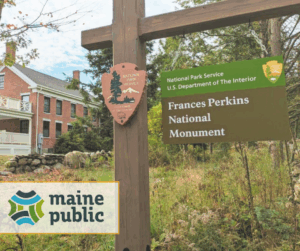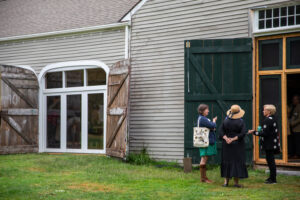From The New York Times:
7.7 Million Young People Are Unemployed. We Need a New ‘Tree Army.’
The Depression-era Civilian Conservation Corps helped build America at a time of national crisis. Let’s do it again.
By
Mr. O’Mara is the president and C.E.O. of the National Wildlife Federation.

Credit…Fotosearch/Getty Images
Nearly 40 percent worked in the devastated retail and food service sectors. And as the most recently hired, young workers are typically the first let go and often the last rehired, especially those of color.
As our country’s leaders consider a range of solutions to address this crisis, there’s one fix that will put millions of young Americans directly to work: a 21st-century version of the Civilian Conservation Corps.
In 1933, when President Franklin Roosevelt created the C.C.C., he was facing, as we are today, the possibility of a lost generation of young people. The conservation-minded president’s idea was to hire young unemployed men for projects in forestry, soil conservation and recreation. By 1942, the 3.4 million participants in “Roosevelt’s Tree Army” had planted more than three billion trees, built hundreds of parks and wildlife refuges and completed thousands of miles of trails and roads.
While the corps was not perfect — only men were hired, work camps were segregated, and some projects caused ecological damage — the C.C.C. was the most expansive and successful youth employment program in American history. It also played a crucial role in forging the Greatest Generation, which defeated fascism and built the strongest economy in the world. Today, there’s plenty to do for a revitalized conservation corps that would put young Americans back to work.
We’ve amassed a staggering backlog of restoration needs for our nation’s lands and waters, and face escalating vulnerabilities to fires, floods, hurricanes and droughts. Our national parks, wildlife refuges and other public lands have $20 billion in deferred maintenance — and states have tens of billions of dollars more. Eighty million acres of national forests need rehabilitation. Half a million abandoned coal and hard-rock mines and thousands of orphaned oil and gas wells need reclamation. More than 12,000 species of at-risk wildlife, fish and plants need conservation.
Smart investments in natural solutions could create millions of immediate jobs for the demographic groups and regions acutely affected by the downturn. One study found that restoration jobs support up to 33 jobs per $1 million of investment, which can stimulate economic growth and employment in other industries. Those that would stand to benefit include outdoor recreation, agriculture, forestry and ranching, which have been hit hard by the pandemic.
These projects would expand recreational opportunities, increase our resilience to extreme weather and use nature by planting trees to sequester the carbon dioxide emissions that are warming the planet.
We already have federal, state, local and tribal plans and projects that have been vetted and are ready to go, and pending bipartisan legislation, like the Great America Outdoors Act and the Recovering America’s Wildlife Act, which would provide financing for some of this work. We also have the infrastructure of AmeriCorps’ National Civilian Community Corps and other programs that are part of the Corporation for National and Community Service. They can be scaled up and modernized, as proposed by Senators Chris Coons of Delaware and Martin Heinrich of New Mexico, both Democrats, and others.
First, all communities must benefit, including youth of color and Indigenous young people. Second, states, local governments and tribes must be full partners. Third, high-quality educational opportunities and apprenticeships must be included to ensure that the program’s participants are fully prepared for private-sector employment opportunities.
How much would all this cost? That depends on the scope of our ambitions. But clearly, there is plenty of work to be done and too many young people without jobs or prospects who are available to do it.
We can prevent a youth unemployment crisis from hobbling the next generation, strengthen local economies and bolster community resilience, but we must act now to put millions of young people to work restoring America’s natural treasures.
Collin O’Mara (@Collin_OMara) is president and C.E.O. of the National Wildlife Federation and a former participant in the AmeriCorps VISTA program.


